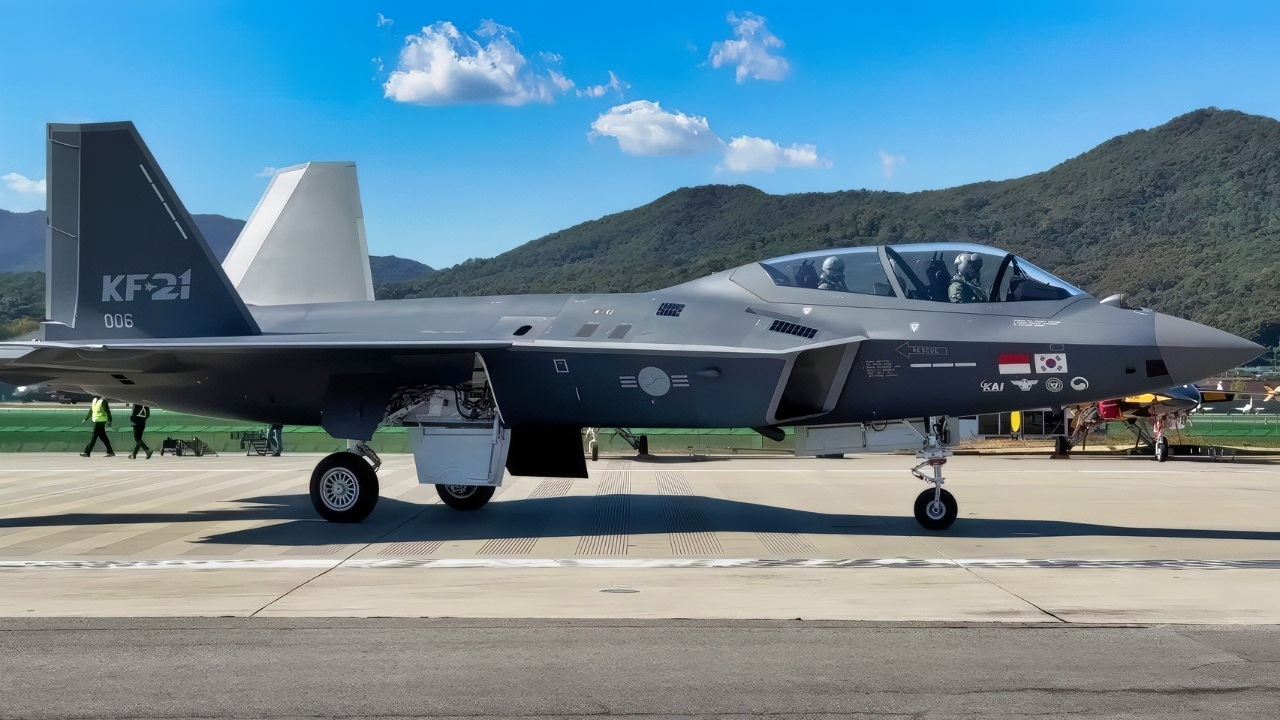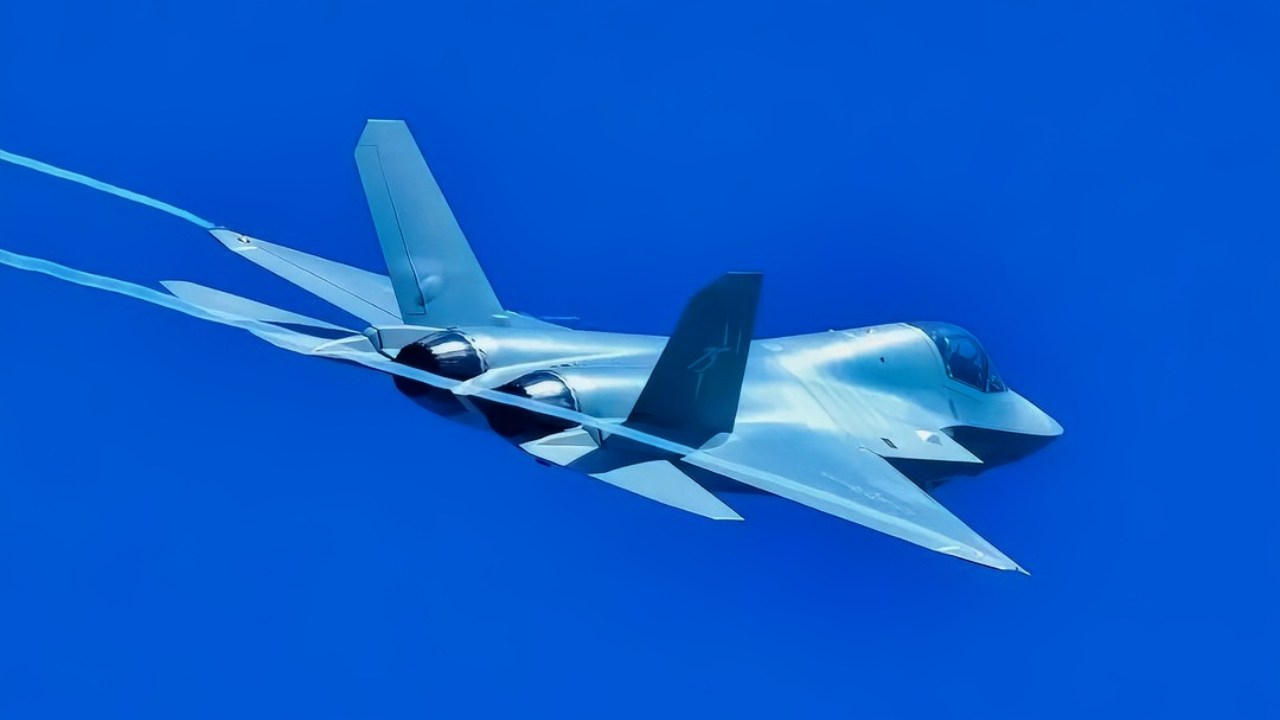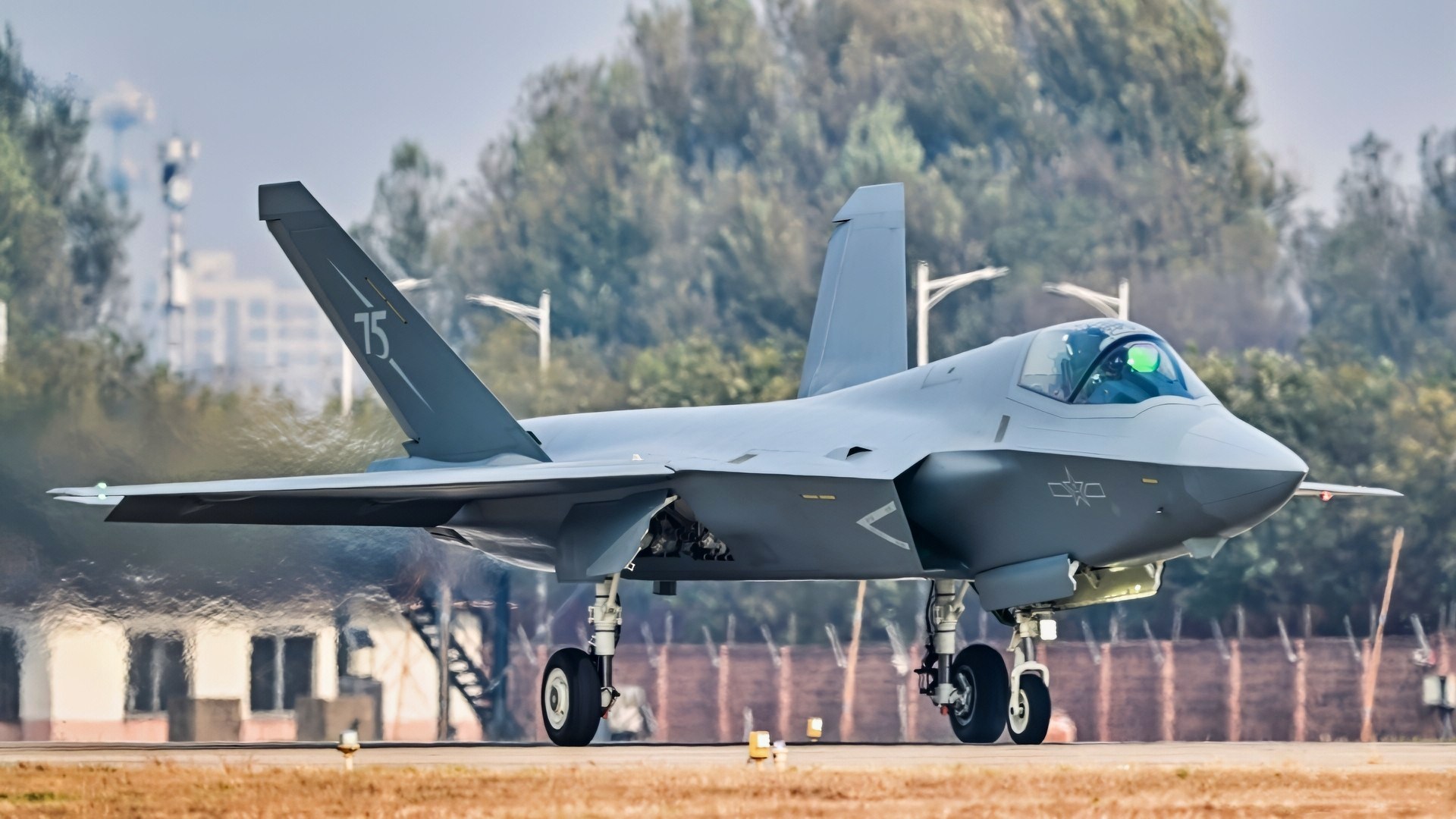Article Summary – The KF-21 Boramae is South Korea’s newest and most advanced fighter jet, designed to replace its aging fleet of F-4 and F-5 fighters.
-It was built in response to the growing threat posed by China and North Korea, who are actively modernizing their own air forces (specifically China).

KF-21 Fighter from South Korea. Image Credit: Creative Commons.
-The J-35A is the fruit of China’s modernization attempts. It is the most recent addition to the PLAAF and is optimized for both land and naval operations.
-Both aircraft are highly advanced in their own regard, but which one would win in a one-on-one fight?
KF-21 vs. J-35A: Battle of the Budget F-35s
The KF-21, developed by South Korea’s KAI with Indonesian participation, is classified as a 4.5-generation fighter with a clear upgrade path toward near-5th-generation capabilities. It first flew in July 2022 and is expected to enter service around 2026.
Its design emphasizes affordability and versatility, combining semi-stealth features with advanced avionics. The aircraft uses twin GE F414 engines, which are reliable and proven, giving it a maximum speed of Mach 1.81 and a combat range of roughly 1,000 kilometers. Its current configuration relies on external hardpoints for weapons, which compromises stealth, though future Block III variants aim to incorporate internal bays. The KF-21 carries AIM-120 AMRAAMs, indigenous Korean missiles, and precision-guided bombs, making it a capable multirole platform.
In contrast, the J-35A is China’s latest 5th-generation stealth fighter, developed by Shenyang Aircraft Corporation. It first flew in 2023 and entered service in 2025.
Unlike the KF-21, the J-35A was designed from the outset as a low-observable platform, featuring internal weapons bays, diverterless supersonic inlets, and radar-absorbent coatings.
Its aerodynamic shaping and panel alignment further reduce radar cross-section, giving it a significant advantage in stealth.
The J-35A is powered by Chinese WS-19 or improved WS-13 engines, with performance estimates suggesting speeds around Mach 1.8 and a range exceeding 1,200 kilometers. It integrates an advanced AESA radar, infrared search and track (IRST), and a sophisticated electronic warfare suite, all tied into China’s network-centric doctrine.

J-35A Fighter from China. Image Credit: PLAAF

J-35A Fighter in the Clouds. Image Credit: Chinese Weibo.
Its primary weapons include the PL-15E long-range air-to-air missile, believed to have a range exceeding 200 kilometers, and the PL-10 short-range missile for dogfighting.
Stealth Systems and Avionics
The KF-21 is best described as a budget stealth fighter. It offers a reduced radar signature compared to older 4th-generation jets, but cannot match the low observability of true 5th-generation aircraft like the J-35A.
External weapons carriage on current KF-21 variants further increases its radar signature, whereas the J-35A maintains its stealth profile through internal bays, stealth shaping, and RAM coatings. This difference is critical in beyond-visual-range (BVR) combat, where detection and engagement often occur before either aircraft sees the other. In this domain, the J-35A’s stealth advantage means it will almost certainly detect and target the KF-21 first.
Avionics and sensor integration further tilt the balance toward the J-35A. While the KF-21 features an indigenous AESA radar, IRST, and modern electronic warfare systems, its sensor fusion is not yet at the level of Western 5th-generation fighters.
The J-35A, on the other hand, combines its AESA radar and IRST with advanced data fusion and networking capabilities, enabling it to share targeting information across platforms and exploit long-range missile advantages.
Engine Performance and Weaponry
The KF-21uses two GE F414-GE-400K afterburning turbofan engines, which are proven, reliable, and widely used in fighters like the F/A-18E/F. They provide strong thrust and excellent maintainability but lack supercruise capability. In contrast, the J-35A is powered by Chinese-developed WS-19 engines (or advanced WS-13 variants), designed for higher thrust and improved fuel efficiency to support stealth operations.
While these engines aim to meet Western standards, China has historically struggled with domestic engine production, and reliability issues have caused problems in the past.
In terms of weaponry, the KF-21 can carry a diverse mix of air-to-air and air-to-ground munitions, but its reliance on external pylons in early variants undermines stealth.
The J-35A’s internal bays allow it to remain low-observable while carrying lethal BVR and WVR weapons. In a dogfight scenario, the KF-21’s agility and fly-by-wire controls give it strong kinematic performance, potentially superior to the J-35A, which, like most stealth fighters, sacrifices some maneuverability for low observability.
However, the J-35A’s PL-10 missile, combined with helmet-mounted sights and high off-boresight targeting, makes it extremely dangerous even at close range.
Which Fighter Wins?
If we imagine a neutral encounter with no external support, the outcome is clear. In BVR combat, the J-35A’s stealth and long-range missile capability would almost certainly allow it to engage first, forcing the KF-21 into a defensive posture.
The Korean fighter might attempt to evade and close the distance, but doing so against a stealth opponent with superior sensors is extremely difficult.
Should the KF-21 survive long enough to enter within visual range, its agility could offer a fighting chance, but the J-35A’s advanced short-range missiles and targeting systems would still pose a formidable threat.
Overall, the J-35A would win in most scenarios, primarily because of its stealth and sensor superiority.
About the Author: Isaac Seitz
Isaac Seitz, a Defense Columnist, graduated from Patrick Henry College’s Strategic Intelligence and National Security program. He has also studied Russian at Middlebury Language Schools and has worked as an intelligence Analyst in the private sector.
More Military
Taiwan’s F-16V Fighter Was Built to Fight China’s Air Force
5 Places World War III Could Break Out in 2026
The X-37B Space Plane Is Breaking All the Rules and Makes Chinese Generals Sweat










